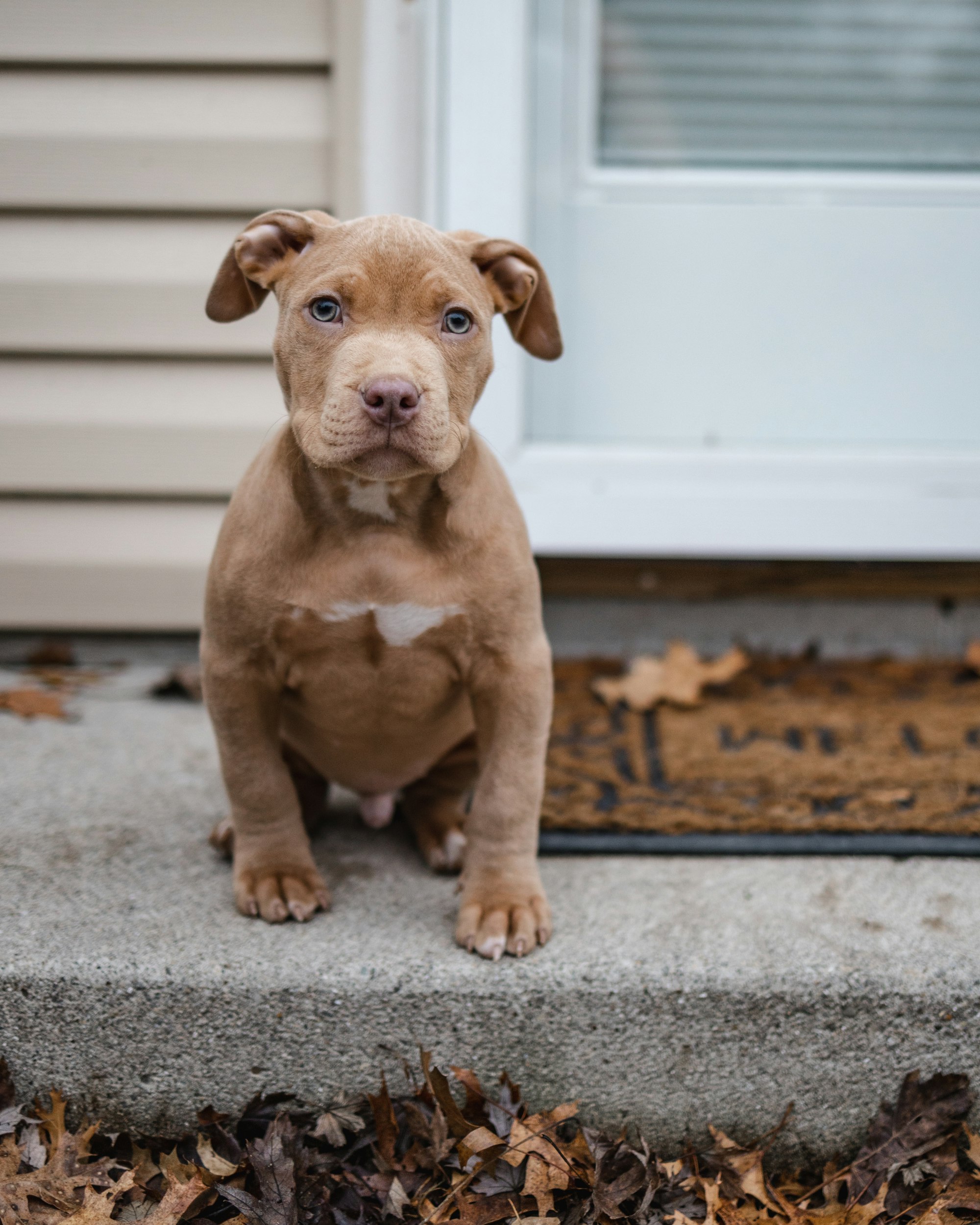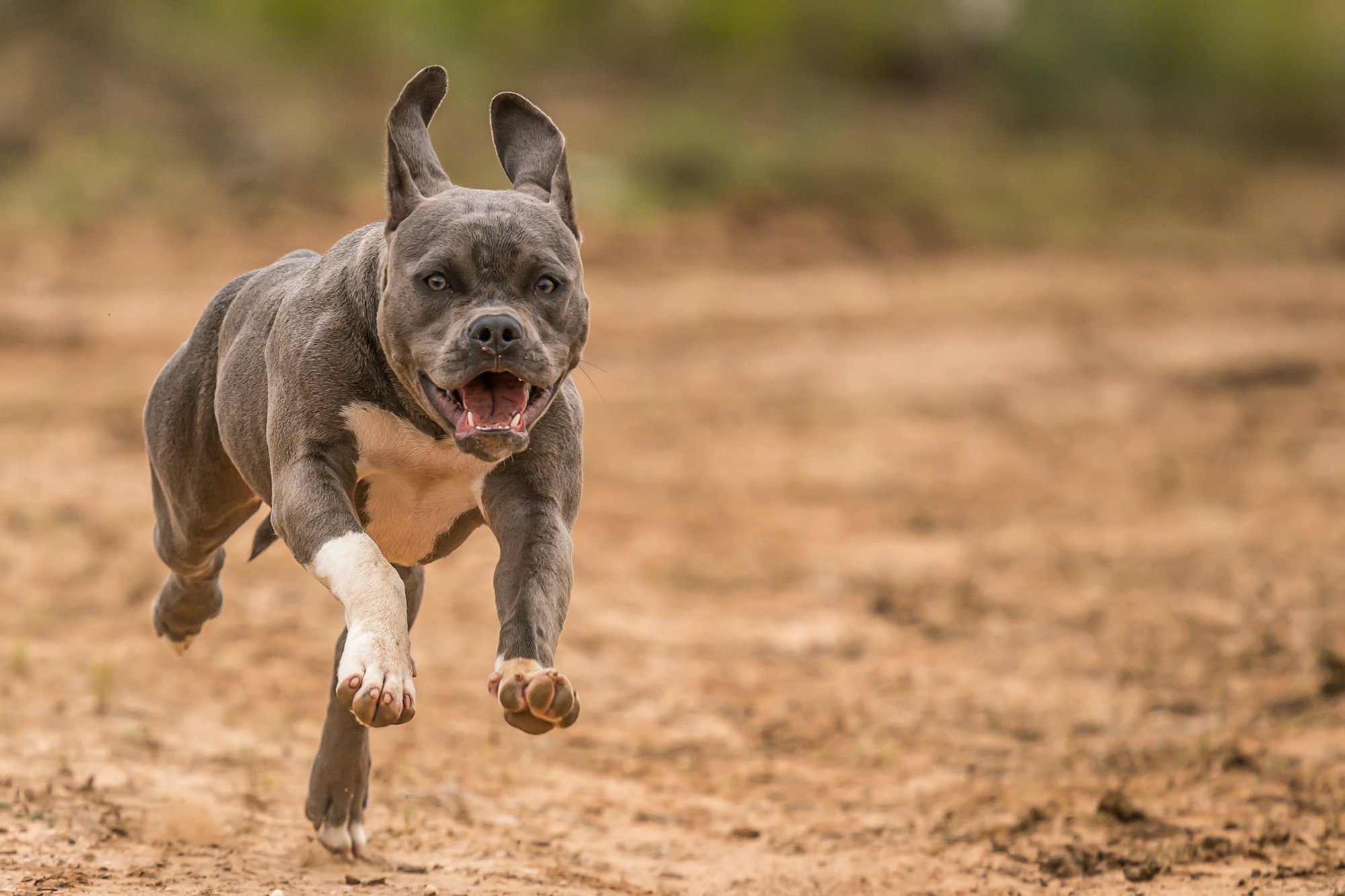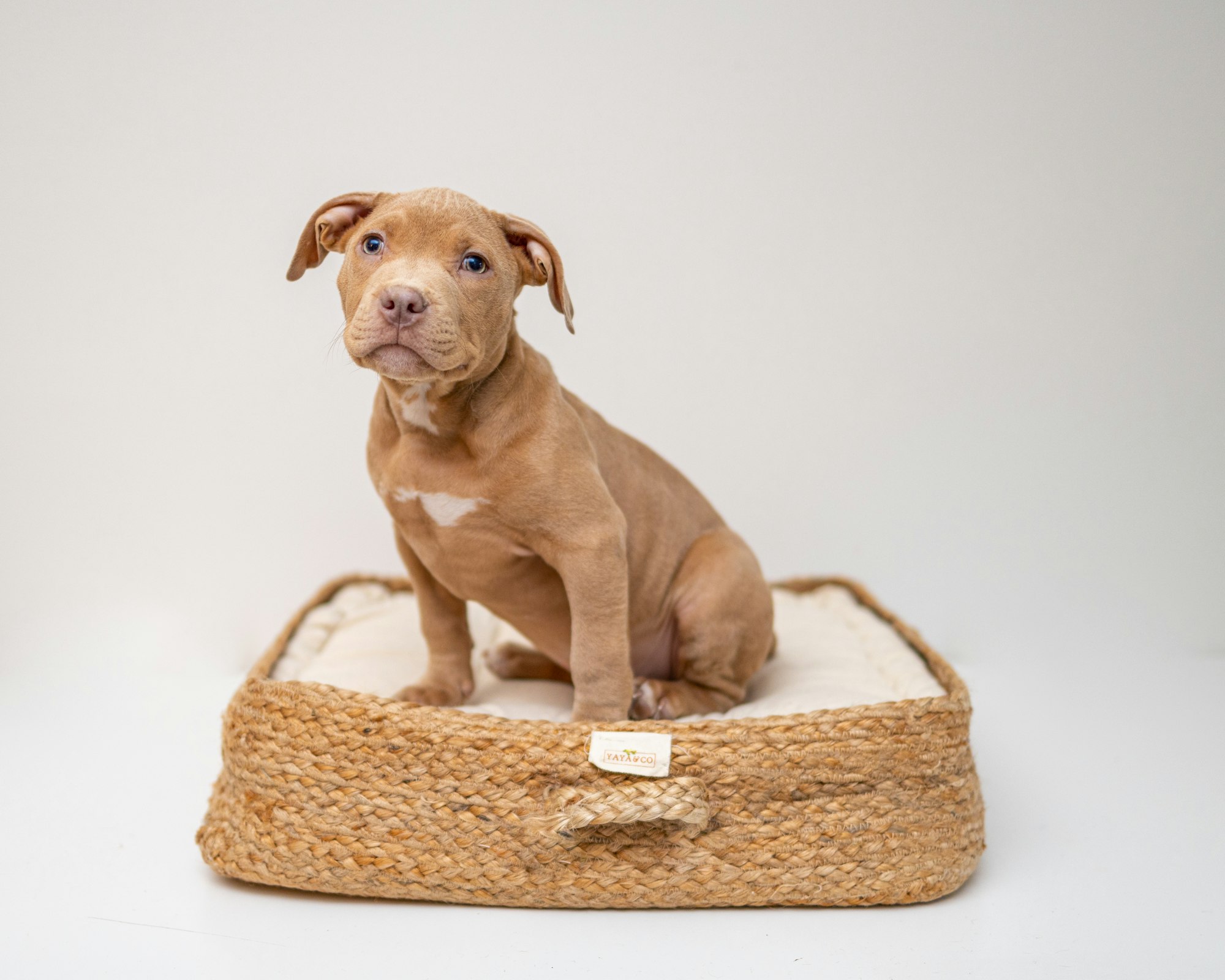Puppies of all breeds can be vivacious, curious, playful, and sometimes mischievous. Pitbull puppies are no exception. In fact, they’re known to be energetic and determined! If you’re considering owning a 4 month old Pitbull puppy, you’re in for a lot of fun and plenty of work.
These spectacularly smart and loyal dogs can be wonderful companions. They need plenty of exercise, socialization, and training to ensure they remain happy and healthy. Because of their strong-willed nature, it’s essential to start training them from a young age, if you want to have a lifelong companion that’s well-mannered. But there is a lot more to it than that alone, so let's dive into the details.
4 Month Old Pitbull: What To Expect
4 month old pitbulls are in the prime of their puppyhood. This is an important development period, as they’re able to learn basic commands and begin to understand their place in the family. During this time, they should be taken to puppy classes, and exposed to new people and animals to socialize them.
Let's start out with some key facts about 4 month old Pitbulls, so that you can gauge your own pup's growth and development.

How Big Should a 4 month Old Pitbull Be?
At 4 months old, a Pitbull puppy should be around around 17-19 inches in height. Keep in mind that this is just an estimate, as each puppy will develop differently. Some dogs may be larger or smaller than the estimated size, depending on the breed, their parents, and diet.

Remember that each puppy is an individual, and it's important to keep track of your pup's growth and development. Talk to your vet if you have any concerns about your puppy's size or health. The most important part of raising a healthy pup is providing the proper nutrition and exercise, so don't forget to give your pup the best care possible.
The Weight of a 4 Month Old Pitbull
Around 20 to 30 pounds is considered a healthy weight for a 4-month-old Pitbull.
The weight of a 4 month old Pitbull is also dependent on their diet. If they’re not getting the proper nutrition, they may be smaller than average. A healthy diet is essential for a puppy’s growth and development, so always make sure to feed your pup a high-quality, age-appropriate food.
4 Month or 16-Week Old Pitbull Puppy Food
When it comes to feeding a 4 month old Pitbull puppy, it’s important to choose high-quality, age-appropriate food. This is about the age when you can switch your puppy from a puppy food to an adult food. However, it’s important to pay attention to the amount of food you’re feeding your pup and the ingredients in the food you’ve chosen.
Feeding too much or too little can interfere with your pup’s growth, so it’s best to talk to your vet before making any changes. The back of the bag of food you're feeding your pup should also provide you with feeding instructions.
What to Feed a 4 Month Old Pitbull?
When it comes to feeding a 4 month old Pitbull puppy, it's important to give them a diet that is nutrient-rich and balanced. The best diet for this age group is a high-quality, commercial puppy food that is designed for large breed puppies. Always make sure to follow the manufacturer's guidelines for feeding amounts and frequency.
Dog foods can vary in ingredients, but it's important to know that dogs are natural omnivores, meaning they need a balanced diet of proteins, fruits, vegetables, and grains. Feeding your pup a balanced diet of high-quality proteins, such as chicken, fish, and eggs, along with fresh fruits and vegetables, is the best way to ensure they get the nutrition they need.
You can also give your pup cooked grains such as oatmeal or brown rice. But be sure to avoid giving them table scraps, as these can be unbalanced and unhealthy for your pup.
Table Scraps
If you want your dog to be well-trained for life, do not teach them to sit and beg at the table for food. This can lead to unhealthy behaviors, such as stealing food from the table and overfeeding.
Finally, remember to provide plenty of fresh, clean water for your pup to stay hydrated. Water should be unlimited, and a self-refilling water bowl is a great way to ensure that your pup always has access to fresh, clean water. There should also be plenty of shade and shelter for your pup, as Pitbulls can easily overheat.
How Much and How Often Should a 4 Month Old Pitbull Eat?
Puppies can be fed three to four times a day until they reach six months of age. Depending on their size and activity level, a 4-month-old Pitbull should eat between 2-4 cups of high-quality dry puppy food per day, divided into multiple meals.
To break this down, a 4-month-old Pitbull should eat between 1/2 cup and 1 cup of food at each meal. If your puppy is very active and growing quickly, they may need to eat closer to 4 cups of food per day. If they are smaller or less active, they may only need to eat 2 cups of food per day.
Remember that food does more than just power the body, it powers the mind. Not only is your dog developing physically, becoming faster and stronger, but his intelligence is also developing. Make sure to provide the best food available, to ensure your pup reaches his full potential. Restriction on meals during such a crucial stage of development can have a negative impact on your pup’s health, growth, and development.
Because of this, it’s important to look for high-quality puppy food with specific ingredients that meet the nutritional needs of a growing pup. If you have any questions, speak to your veterinarian about the best food for your pitbull.

4 Month Old Pitbull Puppy Behavior: Barking, Biting, and Aggressiveness
Barking is a common behavior for puppies at this age, as they are learning to communicate their needs and wants. It is important to remember that this behavior is normal, but it is still important to provide appropriate outlets for the puppy to release their energy. Redirecting their attention to toys or puzzle games can help them to learn more appropriate outlets for their energy.
Biting is also a common behavior at this age, as puppies are still learning how to interact with humans and other animals. It is important to provide positive reinforcement when the puppy is not biting, and to provide a safe chew toy for the puppy to use in order to channel their energy. However, aggression should never be tolerated. Let's look at everything you need to know about barking, biting, and aggressiveness.

Barking
Your young pitbull likely barks often. Does this mean they're going to become a bad dog? Absolutely not. Most puppies bark, it's a reflex. It's an instinctive way of communicating and expressing themselves.
What should you do if your puppy barks? First, identify why they're barking. Are they lonely? Do they want attention? Do they need to go outside? Once you figure out why they're barking, you can take the appropriate action to stop the barking.
Remember that just like babies cry when they are hungry or tired, puppies bark when they are feeling something – whether it be boredom, stress, or just wanting attention. It's never manipulation or spiteful behavior, your dog simply doesn't know any better, and has no other way to communicate with you. So, it's important to be patient and understanding with your pup, and to not discipline using physical punishment.
Biting
Puppies love to play and explore, and biting is a common behavior at this age. Again, it is important to redirect their attention to appropriate toys and activities, and to provide positive reinforcement when they are not biting.
Biting can be a sign of fear, so it is important to make sure your pup is not feeling any fear or being subjected to any type of negative reinforcement. If your pup is feeling scared or threatened, it is important to provide them with a safe and secure environment.
When it comes to training, make sure to teach your pup the “leave it” command and to reward them with treats when they obey. Remember that puppies learn best through positive reinforcement, so it is important to reward them with treats and praise when they are not biting.
Reasons Why a Puppy May Be Biting You
Fear: If your pup is feeling scared or threatened, they will bite out of self-defense.
Pain: If your pup is in pain, they may bite in order to protect themselves.
Lack of Socialization: If your pup has not had a lot of social experience, they may not understand the way humans interact with each other, and may bite out of confusion or fear.
Protectiveness: If your pup is feeling protective of you or their territory, they may bite in order to protect it.
Playfulness: Remember that puppies bite each other when they play. They will also bite their caretaker when they're learning, but these are usually soft playful bites that aren't too hard to deal with.
Aggressiveness
Aggressiveness is a behavior that should never be tolerated. If your puppy displays aggressive behavior, it is important to seek professional help from a qualified trainer or behaviorist. Aggression can be caused by a variety of factors, such as fear, territoriality, or lack of socialization. It is important to identify the cause of the aggression and to address it with a qualified trainer.
In addition, it is important to provide your puppy with a safe and secure environment, and to teach them appropriate behaviors and commands. The use of positive reinforcement and rewards can help to reinforce desired behaviors.
Overall, it is important to remember that barking, biting, and aggressiveness are all normal behaviors for a four month old pitbull puppy. It is important to provide an appropriate outlet for their energy and to use positive reinforcement when teaching them appropriate behaviors. If your puppy is exhibiting aggressive behavior, it is important to seek professional help from a qualified trainer or behaviorist.

How Much Sleep Does a 4 Month Old Pitbull Need?
Pitbulls, like all puppies, need a lot of sleep. On average, a 4 month old Pitbull should be getting around 15-17 hours of sleep per day. This should be broken down into two main sleep periods – a longer sleep period at night and shorter naps throughout the day.
It's important to provide your pup with a comfortable place to sleep that is away from any noise or distractions. Additionally, make sure that your pup has had ample opportunity to exercise and play throughout the day, as this will help tire them out and ensure that they get quality sleep.
How Much Exercise Does a 4 Month Old Pitbull Need?
Pitbulls are an active breed, and at 4 months old, your pup should be getting around 1 hour of exercise a day. This can include a combination of playtime, walks, and training sessions. Make sure to adjust the intensity of the exercise depending on how your pup is feeling that day.
The amount of exercise a 4 month old Pitbull needs is regular. But good luck managing it! Puppies naturally have a lot of energy and need to be taken on daily walks, and given plenty of playtime. This is especially important for Pitbulls, since they need to stay active to stay healthy. You can merge your exercise and training times by taking your pup on a walk and teaching them commands along the way. Another great way to tire them out is to play a game of fetch, or take them to a dog park.
It's important to keep in mind that puppies are still growing and shouldn't be over-exercised. Be sure to provide plenty of breaks and monitor your pup closely for signs of fatigue or exhaustion.
Looking for an easy way to keep track of your dog’s daily activity level? Fi smart dog collars make it easier than ever. These slender, smart collars feature an activity tracker that counts your pup’s steps and even gives you daily, weekly and monthly goals to meet. It’s almost like a FitBit for your dog that will help you stay on top of Fido’s fitness routine.
How to Train a 4 Month Old Pitbull Puppy?
Training a 4 month old Pitbull puppy should focus on positive reinforcement and consistency. Start by teaching basic commands such as sit, stay, come, and leave it. Make sure to reward your pup for following commands with treats, affection, or a favorite toy.
You'll also want to start teaching your pup basic manners. If your pup jumps up on people or furniture, provide a gentle “no” and redirect their attention to an acceptable behavior.
Finally, socialization is an important part of training a Pitbull puppy. Start by introducing your pup to new people and animals in a safe, controlled environment. This will help ensure that your pup grows up to be a well-adjusted, friendly member of the family. The more socialization experiences your pup has early on, the better.

Conclusion
A 4 month old pitbull puppy is a great commitment, but also a great reward. Remember that at this age, the pup is still learning and needs patience and consistency in training. It is important to get the pup used to proper socialization with people, and other animals, so that it grows into a well-behaved and friendly pet. With the proper care, a pitbull puppy can be a loyal and loving companion for years to come.
Get more expert advice on pet-parenting by visiting the Off Leash blog at TryFi.com.
TryFi's The Fi Dog Collar is a must-have for any pet parent, it's a GPS tracking collar that helps you keep tabs on your dog's location, activity, and sleep patterns, and alerts you if they escape your backyard. Try the Fi Dog Collar today!






